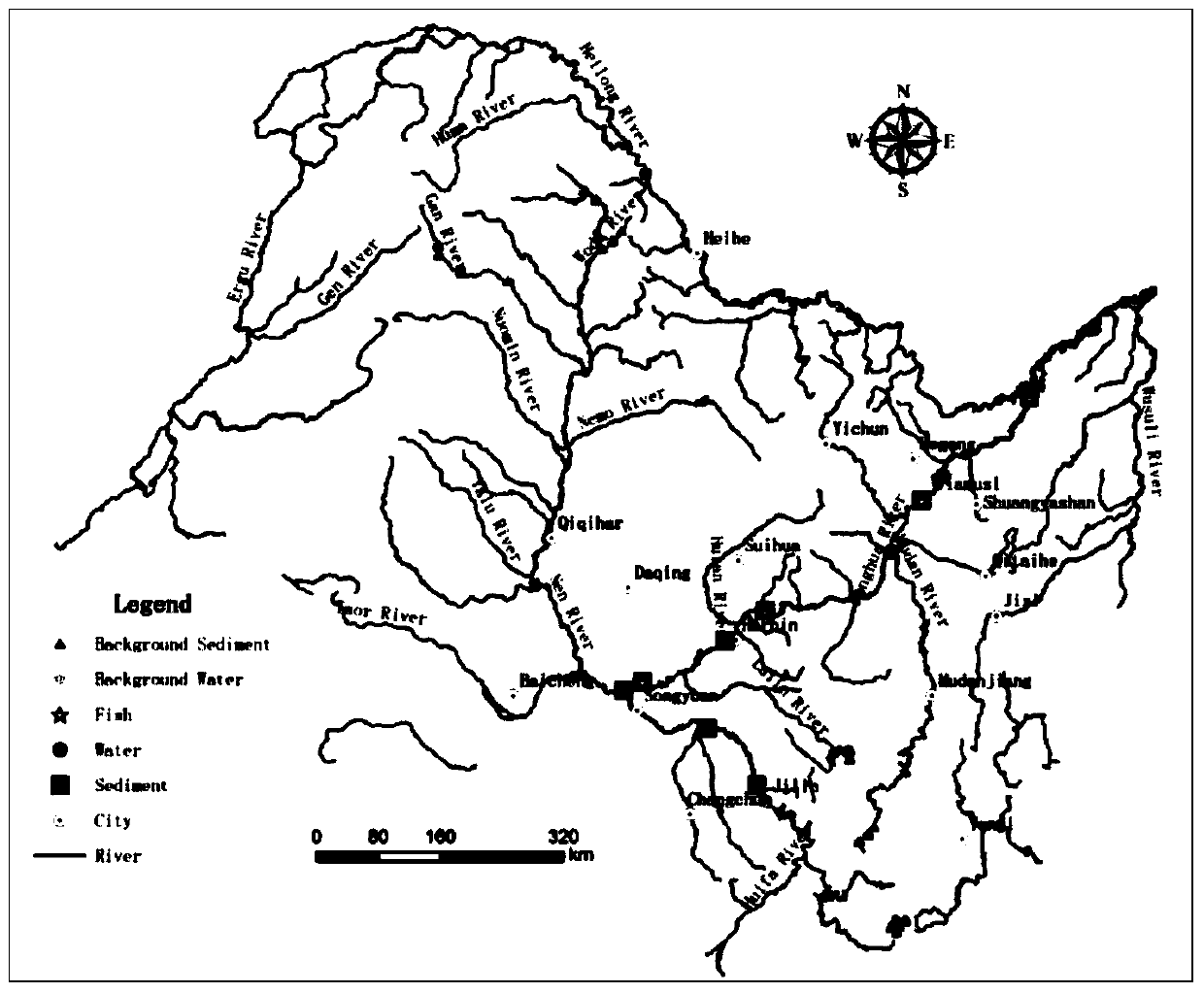Modeling method of heavy metal optimal control pollutant screening model based on river ecosystem
A technology of river ecosystem and modeling method, which is applied in the field of heavy metal pollutant screening model modeling, and can solve the problem of not much research on heavy metals
- Summary
- Abstract
- Description
- Claims
- Application Information
AI Technical Summary
Problems solved by technology
Method used
Image
Examples
Embodiment Construction
[0037] Such as Figure 1~3 As shown, the present embodiment describes in detail the method of the present invention:
[0038] 1 Migration and transformation of heavy metals in river three-phase space
[0039] After heavy metals are released into the environment, they are easy to pass and accumulate through the food chain (Li et al., 2007; Lü et al., 2008), so heavy metals entering the water body can eventually enter the human body through the consumption of fish and other aquatic products (Jia, 2005) , while producing toxic effects on fish (Zhang et al., 2006), it also poses a serious threat to human health. In addition, heavy metals in water bodies are easy to form complexes or chelates with organic polymers, adsorbed on the surface of clay minerals, etc., enter and accumulate in sediments, and the sediments that adsorb heavy metals go through a series of physical, chemical and biological processes. Heavy metals are re-released, causing secondary pollution of the water envi...
PUM
 Login to View More
Login to View More Abstract
Description
Claims
Application Information
 Login to View More
Login to View More - R&D
- Intellectual Property
- Life Sciences
- Materials
- Tech Scout
- Unparalleled Data Quality
- Higher Quality Content
- 60% Fewer Hallucinations
Browse by: Latest US Patents, China's latest patents, Technical Efficacy Thesaurus, Application Domain, Technology Topic, Popular Technical Reports.
© 2025 PatSnap. All rights reserved.Legal|Privacy policy|Modern Slavery Act Transparency Statement|Sitemap|About US| Contact US: help@patsnap.com



